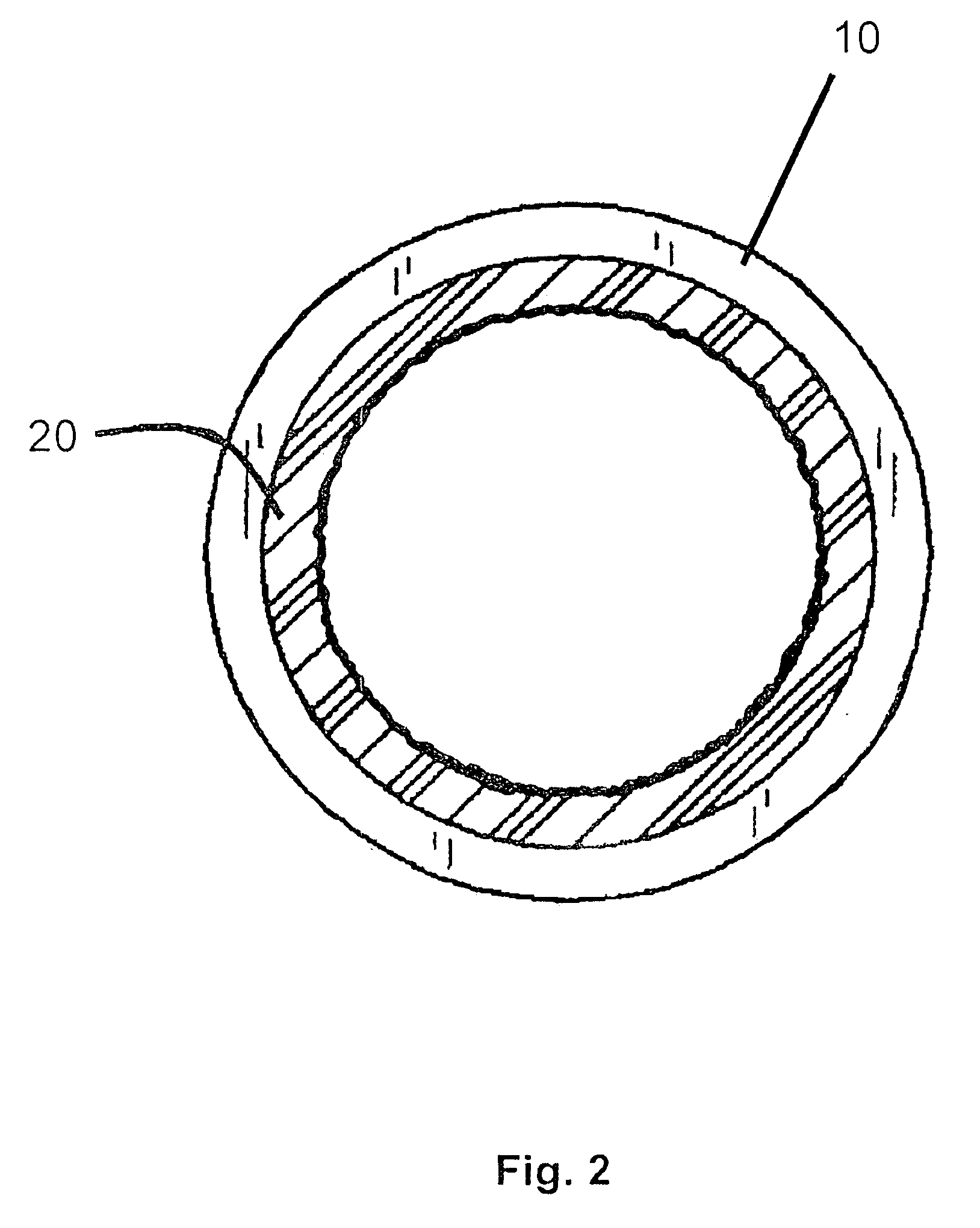Multi-action drain cleaning composition and method
- Summary
- Abstract
- Description
- Claims
- Application Information
AI Technical Summary
Benefits of technology
Problems solved by technology
Method used
Image
Examples
example 1
Preparation of Cleaners
[0057]A sample of a cleaner in accordance with an embodiment of the invention (“Cleaner 1”), a sample of a cleaner in accordance with an embodiment of the invention without the biologic component and carbohydrate additive (“Cleaner 2”), and five other commercially available cleaners were tested and compared, using various test procedures previously described in patent literature. The compositions of all the cleaners are detailed below. Cleaner 1 and Cleaner 2 were prepared by premixing the surfactant, silicate, caustic, and aluminum chips in a Paterson-Kelley mixer in a dry environment and then incorporating this blend into a final mix with the sodium percarbonate, sodium carbonate, and, for Cleaner 1, bacteria and dextrose.
[0058]Cleaner 1 was prepared with components within the following general ranges:
ComponentCAS#% by WgtSupplierSodium percarbonate5968-11-610-60Burlington ChemicalSodium carbonate5968-11-630-80FMC Corp.Sodium lauryl sulfate151-21-30.1-3.0Ste...
example 2
[0068]One important factor for evaluating drainer cleaner performance is heat generation, as described in U.S. Pat. No. 4,206,068, incorporated herein by reference. To study heat generation, a recommended amount of each cleaner for 100 mg of water was added to the water in a calorimeter to accurately measure the heat generated. The temperature change, time to reach maximum temperature, and duration of time which maximum temperature was sustained were measured and recorded in Table 1.
[0069]The temperature was monitored during the first 5 minutes of mixing. As seen from Table 1, Cleaner 2, which did not contain the biologic component and carbohydrate additive experienced no temperature increase due to lack of dextrose that acts to accelerate the reaction by serving as a reducing agent for the percarbonate oxidizing agent. The initial increase in temperature of the cleaning system when placed in water is due to the reaction of caustic / aluminum with water. If the caustic / ...
example 3
Gas Generation and Foam Height
[0071]Gas generation is an important feature in the efficacy of a drain cleaner because gas can fracture a blockage. By sealing the top opening of the drain, the gas generated and the pressure build-up allows an accelerated elimination of the blockage. Unlike most acid and highly caustic drain cleaners, a drain cleaner composition in accordance with an embodiment of the invention produces gas.
[0072]Foam height is another important measurement in evaluating the effectiveness of a drain cleaner. Foam and surfactants help to fracture and dislodge the plug and promote more complete plug removal. While the foam rises along the drainpipe, active chemicals are deposited throughout the dimensional cross section of vertical and horizontal pipes. The foam also allows the active chemicals to move up the pipe to the drain area, where food particles, hair, and soap can lodge around the trap system. The foaming action also provides fissures in the drain blockage, thr...
PUM
 Login to View More
Login to View More Abstract
Description
Claims
Application Information
 Login to View More
Login to View More - R&D
- Intellectual Property
- Life Sciences
- Materials
- Tech Scout
- Unparalleled Data Quality
- Higher Quality Content
- 60% Fewer Hallucinations
Browse by: Latest US Patents, China's latest patents, Technical Efficacy Thesaurus, Application Domain, Technology Topic, Popular Technical Reports.
© 2025 PatSnap. All rights reserved.Legal|Privacy policy|Modern Slavery Act Transparency Statement|Sitemap|About US| Contact US: help@patsnap.com



